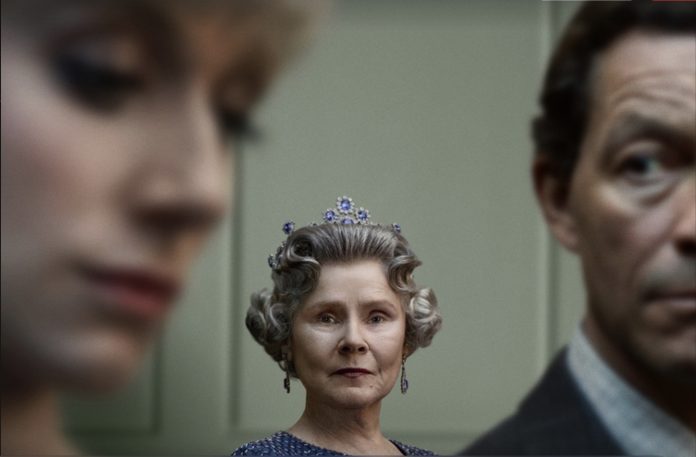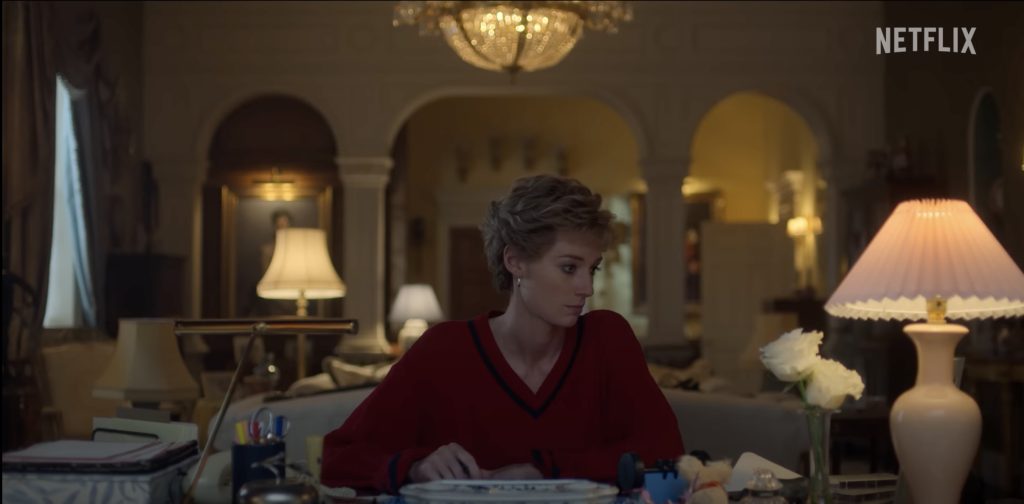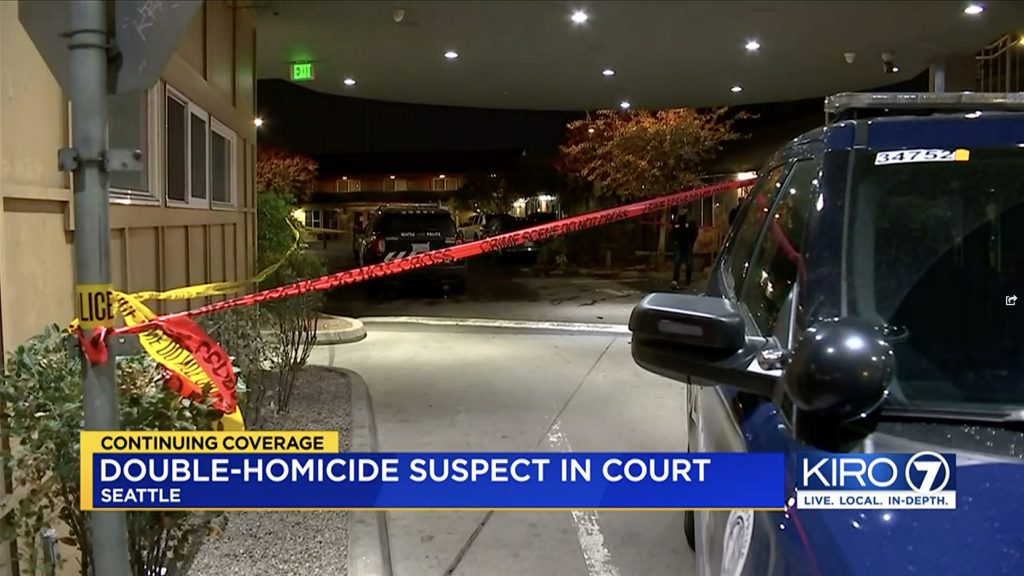
There is a concept in television called a bottle episode. It’s where a show puts one or a few characters into a single location and films them in virtually real time for the entire episode. Think about Seinfeld waiting “5 or 10 minutes” for a table before the movie. Or Peralta and Holt trying to break an interrogation with perseverance and a guitar. Often cheap to produce and relying on a lot of improvisation, bottle episodes can be fillers between complex or effects-driven installments.
It is strange to think of this technique in regards to expansive, multi-character period-costume dramas like “The Crown.” With its fifth season recently released on Netflix, “The Crown” takes another time jump to move into the 1990s after it has already covered everything from Queen Elizabeth II’s coronation in 1952 through the birth and lives of her kids in the 60’s and 70’s. Like the monarchy it dramatizes, the show covers every corner of the planet. Sometimes in a single episode. There are expansive balls and paparazzi and state visits with appropriately large crowds to greet the royals.
But looking past the set piece parties and backdrop crowds, one starts to notice how few expansive scenes the show actually features. Outside views go to cars pulling into driveways and purposeful walking. Palace views linger then stop at the front door. Lots of horse nostrils and grouse hunting. Then the bottle closes with characters stuck inside. An enormous amount of “The Crown” is two trapped people posing on posh chairs and talking at one another. Big parts of the show feel very confined and limited.
The visual language of tension
Without going into spoilers, there is a sequence in the second episode of the new season that uniquely illustrates the tightening, almost bottle episode nature of parts of “The Crown.” Titled “The System,” the episode runs dual narratives. One thread looks at Prince Phillip’s (now played by Jonathan Pryce) passion for horses and how it lets him help a family friend in need. The parallel story covers Princess Diana’s (now Elizabeth Debicki) contacts with journalist Andrew Morton.
After about 20 minutes of setting up the situations, the parallel stories really get moving. Phillip and his companion are out carriage driving. Shots of them in the countryside are beautiful and wide-angled, with just the two of them on a carriage seat. Their bottle does not have walls, but it is constrained nonetheless.
Interspersed with their plot is the story of Diana working through the narrative of her life. She is stuck in Kensington Palace with limited ability to access the outside world but for photo ops and approved excursions with her husband, Prince Charles (now played by McNulty himself, Dominic West). So she spends her time alone with a cassette recorder, narrating her responses to an unauthorized interview. Her bottle definitely does have walls, and they are very close.

In the climax of the episode, Philip arrives at Kensington Palace to have a conversation with Diana. Needless to say, it’s not a conversation that either of them successfully navigates or comes out of fully understanding what happened. Phillip, constantly surrounded by symbols of history and tradition, invades Diana space. Her wires and cassette tapes and enormous cell phone are no match for the castle’s walls. The duration and inescapability build the trapped feeling. Having the two characters interact on Diana’s turf makes the bottle feel that much smaller.
It’s an amazing bit of episodic television manufacturing. Fully half of the episode is devoted to a small number of characters in very limited spaces moving towards a collision that needs to feel pertinent. The editing imperceptibly narrows the spaces each of these stories consume until they are focused on the two main characters in a single room. The separate scenes both begin with Philip and Diana interacting with many people and events in multiple locations. Then locations drop and characters stop reappearing. The edits between the stories slow to simple alternation until we are left with just Diana waiting for Philip to arrive.
The current season of “The Crown” is estimated to have cost $260 million for ten episodes. That’s a medium movie budget of $26 million for every hour of streamed television. This is not a bottle episode for cost savings. And the specificity of the dialogue (and 21 drama Emmys the series has won) suggest there is not a lot of improvisation. The intensity of these confines have another purpose: dramatic tension. We are feeling the claustrophobia of royalty and fame.
Visual language of movies in real life
Having zero actual sympathy for hereditary monarchies, upper class twits, and colonizers endowed with power from farcical aquatic ceremonies, there is another purpose to dissecting this kind of filmmaking. “The Crown” is a masterclass in illusion. Not just the overall illusion of filmmaking, but using particular techniques like the bottle episode to produce very focused feelings of tension or claustrophobia. Also creating tight spaces allows for their opposites, like grandeur and scope.
Frequently around the city, we get pulled into similar illusions. Good architecture does it very well. Consider the process of moving through a great building like the Seattle Central Library. The very comfortable areas in the reading carols flow into the narrow escalators. Those open into the large Living Room on the main floor. The mix of smaller and larger areas play off one another to inspire awe or comfort or prepare one to move between the two.
It is easier to see “The Crown” style techniques other visual mediums, and the image of our city we get from them. Think of the Chamber of Commerce shots of the Seattle’s skyline that leads into broadcasts of an NFL game. Fantastic glossy videos of the city at Golden Hour sped up just a little bit, allowing the highways to look like streaks of light rather than stop-and-go traffic. Just like in film, these are establishing shots for characters to arrive at a new location. In this case, the characters are the football teams.
The evening news also plays with the language of movies to make particular points. Crime scenes will feature lines of police cars closing in the sides of the screen with flapping police tape in the foreground. Unhoused people will be photographed in tight confines, under overhangs and in alcoves. These are editorial decisions, creating tension that closely follows what we see in movies.

Compare them to the real estate videos that try to expand the size and grandeur of a house. In this video for a 4-bed, 3-bath house in Bellevue, they might as well be dropping the Queen off at Balmoral. It features a long ride up the canals, the slow drone shots of the entry. Only a fifth of the video is inside the house, showing repeated views of the same part of the living room and one bedroom. It’s trying to build grandeur on the cheap.
Having just gotten out of election season, we were inundated with competing attempts to create an image of the city for candidates to run on. On one side, a hack candidate stood in front of a green screen image of an empty building, lamenting her inability to find coffee in Seattle. Other commercials featured upbeat music with a candidate shaking hands with factory workers before the screen faded to mountains covered in firs. Our politicians are a little kingly in that way, playing for the love of their people.
That’s an interesting extra layer for a show like “The Crown.” It’s spent now five seasons wrestling with the questions about how this stodgy regime uses modernizing tools to shape its image, or more often get in its own way. We are living in the world created by that process, selecting politicians who best use the techniques of the royal non-politicians who just want to stay beloved and keep their privileges. Our opinion of the Windsors’ role in that media ecosystem is in turn being shaped by this show about them, streamed on that same technology.
In the episode where Philip and Diana are conversing in a pressure cooker, Philip drops the episode title in his speech. “You’re not a novice any more,” he tells the Princess. “You are long past the point of thinking of this as a family. You understand this is a system. We are all in this system. For better or worse, we’re all stuck in it.” It’s a useful fact to remember. The places we live, the people we elect, and the image of the city and ourselves owe something to the media language their System created. We’re all in this claustrophobic bottle episode.
Ray Dubicki is a stay-at-home dad and parent-on-call for taking care of general school and neighborhood tasks around Ballard. This lets him see how urbanism works (or doesn’t) during the hours most people are locked in their office. He is an attorney and urbanist by training, with soup-to-nuts planning experience from code enforcement to university development to writing zoning ordinances. He enjoys using PowerPoint, but only because it’s no longer a weekly obligation.

